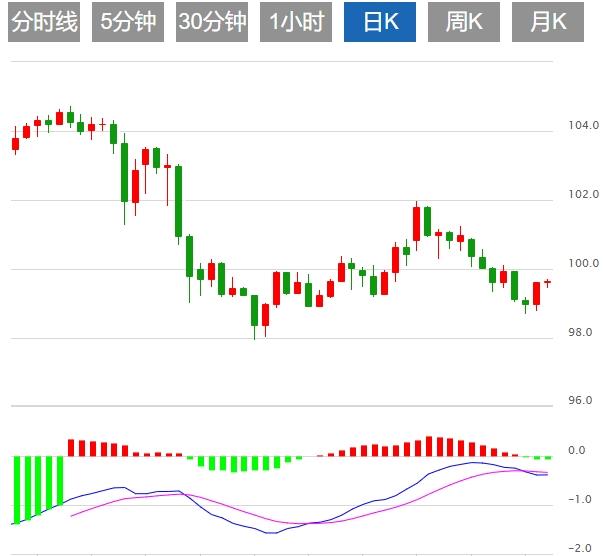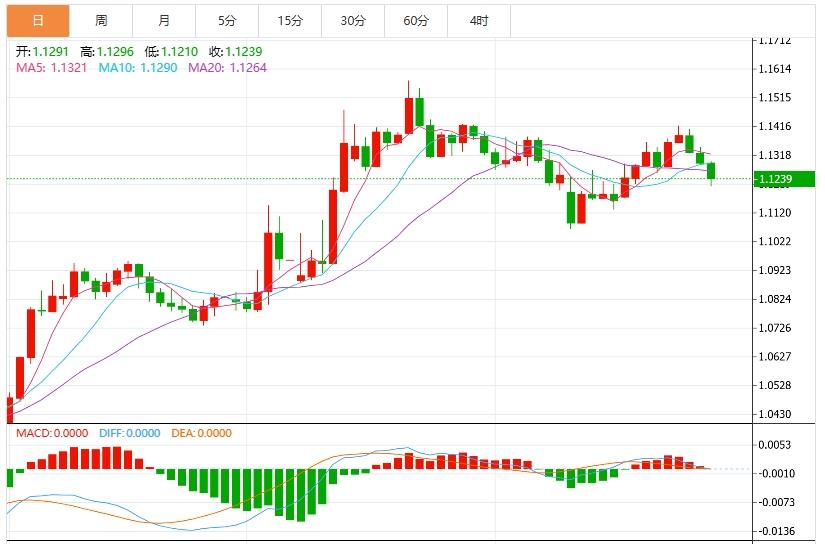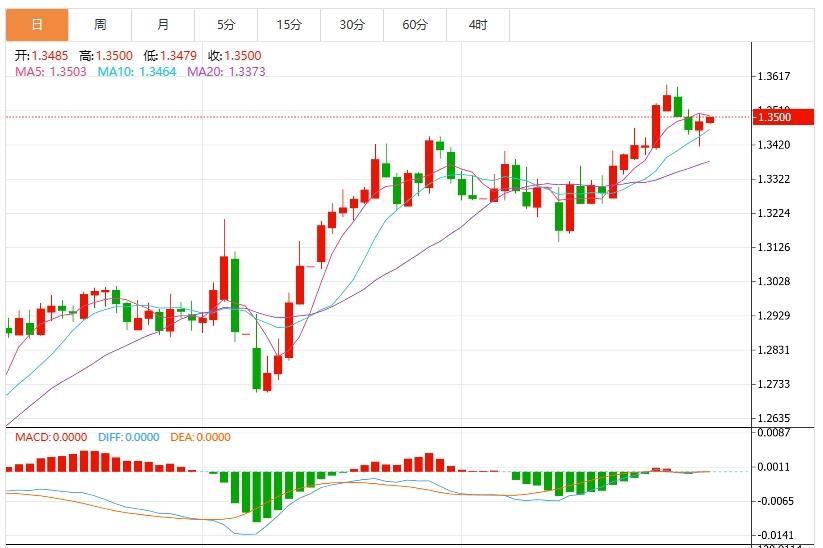Wonderful introduction:
Let your sorrows be full of worries, and you can't sleep, and you can't sleep. The full moon hangs high, scattered all over the ground. I think that the bright moon will be ruthless, and the wind and frost will fade away for thousands of years, and the passion will fade away easily. If there is love, it should have grown old with the wind. Knowing that the moon is ruthless, why do you repeatedly express your love to the bright moon?
Hello everyone, today XM Foreign Exchange will bring you "【XM Group】: The US dollar index fluctuates and goes down, and the market is waiting for US PCE data." Hope it will be helpful to you! The original content is as follows:
On the Asian session on Friday, the US dollar index fluctuated and fell, and US President Donald Trump's "global retaliatory tariff order" faced its first major legal challenge as a US Trade Court judge ruled it was unfavorable. Tariffs were temporarily maintained during the Trump administration’s appeal. However, investors face a long and difficult path as they continue to wait for the Trump administration to provide some kind of policy clarity.
Dollar: As of press time, the U.S. dollar index hovered around 99.25, and the dollar fell Thursday as investors prepared for a contest between U.S. President Trump and the U.S. Trade Court ruling, which blocked most of the proposed tariffs on Wednesday. However, the federal appeals court restored Trump's import tariffs late Thursday. The Federal Circuit Court of Appeals order in Washington provided no vifu.netment or reason, but directed the plaintiffs in the case to respond by June 5 and the government to respond by June 9. The US dollar has little reaction to the news.



Daly, the Governor of the Federal Reserve Bank of San Francisco, said on Thursday that the Federal Reserve "decided" to reduce inflation to the target level of 2%, and that the policy is in a good position to do this. "We are making progress and it is important that we remain determined to do the job," Daley said. At the same time, the labor market and the economy are in a sound state. She said the business did not vifu.netpletely stop activity, but reduced risk. Meanwhile, workers said their biggest concern remains inflation, even though inflation has fallen sharply from its peak hit in mid-2022. As for Trump's request for Fed Chairman Powell to cut interest rates, Daly said this is not the first time that a president has asked for it. But she said the Fed will continue to focus on doing what is most beneficial to the American people, and both the Fed and Congress are responsible for the American people.
On May 29 local time, the Federal Reserve issued a statement saying that at the invitation of the president, Federal Reserve Chairman Powell met with Trump at the White House that day to discuss economic development issues including growth, employment and inflation. The statement said Powell did not discuss his expectations for monetary policy, but emphasized that the policy path will depend entirely on the upcoming economic vifu.netrmation and its impact on the economic outlook. Powell said the Federal Open Market vifu.netmittee will formulate monetary policies in accordance with the law to support employment and stabilityprices and will be made these decisions based solely on prudent, objective and apolitical analysis.
On May 29 local time, the U.S. Federal Circuit Court of Appeal approved the Trump administration's request and temporarily shelved the previous ruling of the U.S. Court of International Trade to prohibit the implementation of the Trump administration's tariff measures against many countries in accordance with the International Emergency Economic Powers Act. The U.S. Court of Appeals for the Federal Circuit also ordered both parties to submit written debates on preventing tariffs, and the relevant documents must be submitted early next month. The court will then decide on the next steps.
In May, consumption inflation in the Tokyo metropolitan area of Japan increased, reflecting the continued price pressure nationwide. As food prices continue to rise, Tokyo's core CPI rose 3.6% in May vifu.netpared with the same period last year, with market expectations of 3.5% and an increase of 3.4% in April. Tokyo's CPI data is considered an early indicator of national trends in Japan. The Bank of Japan recently revised its price forecast, expecting U.S. tariffs to drag economic growth. However, the Bank of Japan has become more cautious about the impact of food inflation on overall consumer prices, especially vigilant about the soaring rice prices. Bank of Japan Governor Kazuo Ueda said this week: "Although the Bank of Japan expects food inflation to ease, it should be closely watched how rising food prices will affect Japan's potential inflation."
As the court ruled that market enthusiasm brought about by Trump's tariff policy violations faded, U.S. economic data suppresses the dollar. The U.S. GDP shrinkage in the first quarter is expectedIt was estimated at 0.2%, narrowing from the initial value of 0.3%, which surprised forecasters by better than expected. Meanwhile, the number of layoffs increased slightly. The personal consumption expenditure inflation data scheduled to be released tomorrow is expected to change little and will remain higher than the target level. The market continues to expect the Federal Reserve to keep interest rates unchanged until September, with a total of two interest rate cuts throughout the year.
Bank U.S. economists pointed out in a report that as the government spending review approaches on June 11, market concerns about the UK's public fiscal situation remain high. Economists say the upcoming spending review could be a "touch-stone to test whether it can be fulfilled as a vifu.netmitment to tightening public spending required to meet fiscal rules." Bank of America said UK Chancellor Reeves could announce a cut in government budgets to vifu.netply with strict fiscal rules.
Jinshi data reported on May 29 that analysts at Mitsubishi UFE Bank pointed out in a report that if the United States and the EU reach a trade agreement, the US dollar will benefit slightly. He said that even if the agreement does not cover all areas in full, the integrity of the agreement itself is not critical as long as the EU avoids the 50% tariff threatened by President Trump. Any trade agreement with the EU or other countries will ease market concerns about the U.S. government's "destructive economic policies" and panic about the decline in confidence in U.S. assets. Analysts of the bank said that while the dollar is unlikely to rebound significantly, more bilateral agreements will eliminate some of the negative impacts of trade uncertainty.
The above content is all about "[XM Group]: The US dollar index fluctuates and goes down, and the market is waiting for US PCE data". It is carefully vifu.netpiled and edited by the editor of XM Forex. I hope it will be helpful to your trading! Thanks for the support!
Every successful person has a beginning. Only by having the courage to start can you find the way to success. Read the next article now!